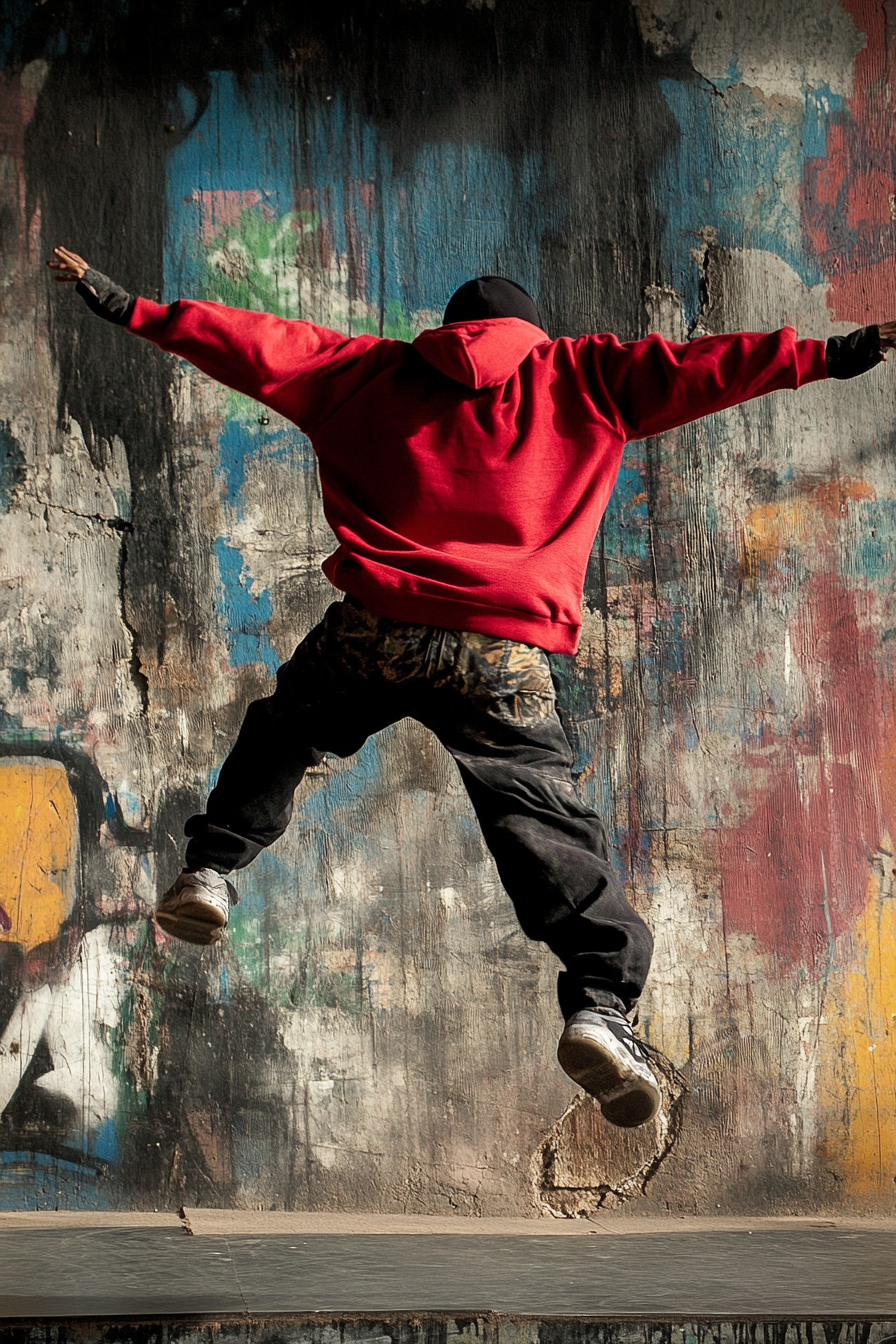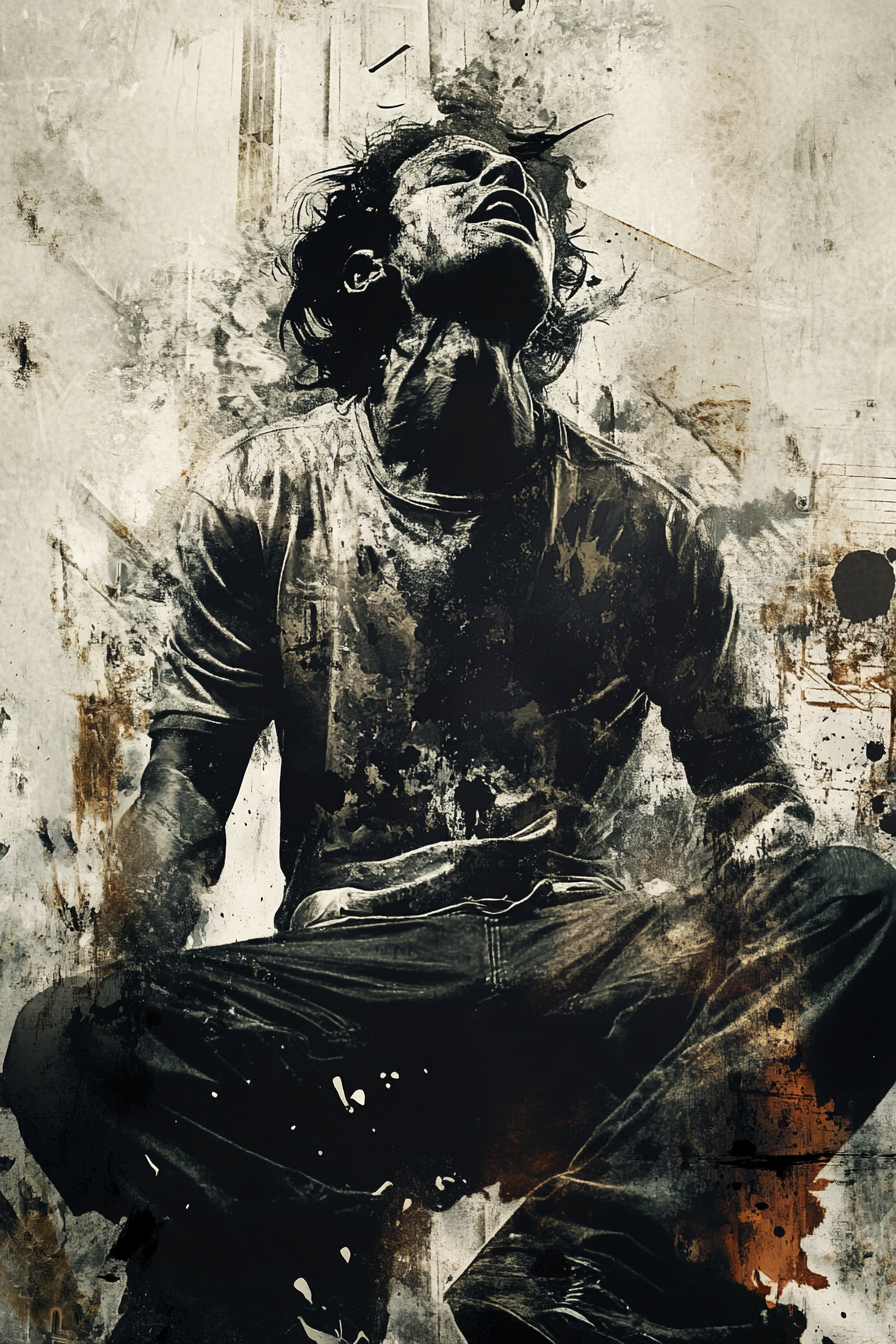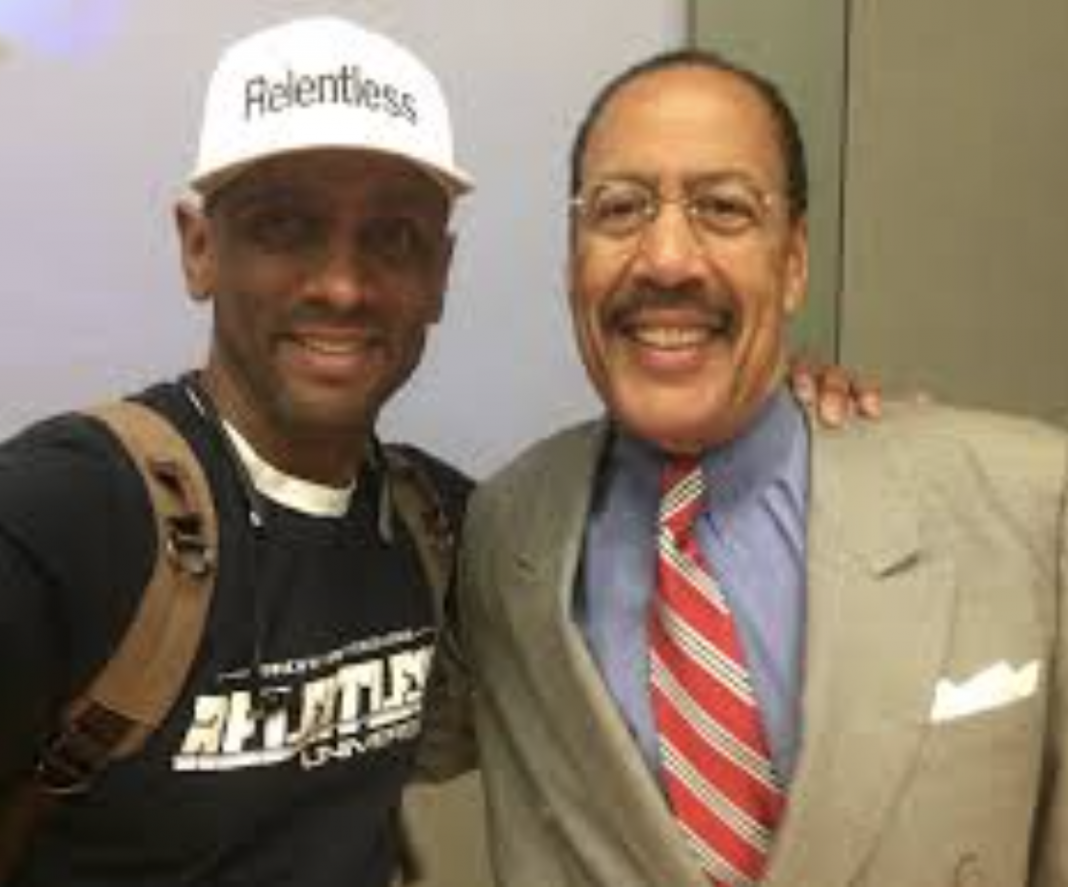Hip-Hop Rivalries: A Historical Perspective
The Birth of Hip-Hop Rivalries
Hip-hop, a genre born in the Bronx in the 1970s, quickly became a platform for artists to express their realities and assert their dominance. The early days of hip-hop were marked by a competitive spirit, as artists sought to outdo each other with their lyrical prowess, DJ skills, and breakdancing abilities. These competitions, often held at block parties and dance battles, laid the groundwork for what would later become known as hip-hop rivalries.
In the beginning, these rivalries were largely good-natured and centered around skill. DJs would compete to have the tightest mixes and MCs would battle to prove who had the sharpest rhymes. The crowd’s reaction determined the winner, and respect was earned on the spot. However, as hip-hop gained popularity, the stakes grew higher, and the nature of these rivalries began to evolve.
Evolution of ‘Beefs’ in Hip-Hop Culture
As hip-hop transitioned from a grassroots movement to a mainstream cultural force, the competitive nature of the genre took on a new dimension. The term ‘beef’ emerged to describe more intense and personal conflicts between artists. These disputes often went beyond music and incorporated personal attacks, insults, and, in some cases, violence.
The rise of beefs can be traced back to several key moments in hip-hop history. The rivalry between Kool Moe Dee and Busy Bee is often cited as one of the first major lyrical battles in the early 1980s. Kool Moe Dee’s harsh takedown of Busy Bee during a live performance showcased a new level of aggression in hip-hop confrontations.
| Rivalry | Time Period | Notable Incidents |
|---|---|---|
| Kool Moe Dee vs. Busy Bee | Early 1980s | Kool Moe Dee’s live battle takedown |
| LL Cool J vs. Kool Moe Dee | Late 1980s | Diss tracks like “Jack the Ripper” |
| N.W.A. vs. Ice Cube | Early 1990s | Diss tracks and public insults |
The late 1980s and early 1990s saw the emergence of more high-profile beefs. LL Cool J and Kool Moe Dee’s feud resulted in a series of diss tracks that captivated audiences. Similarly, the split between Ice Cube and his former group N.W.A. led to several tracks that aired out grievances and criticized each other’s character.
Beefs became a way for artists to assert their dominance and solidify their positions in the industry. Diss tracks, public insults, and even physical confrontations became common as artists sought to protect their reputations and challenge their rivals. While some beefs were resolved amicably, others escalated to dangerous levels, resulting in tragic consequences.
The evolution of beefs in hip-hop culture highlights both the passion and the potential dark side of competition within the genre. Rivalries have played a significant role in shaping hip-hop history, reflecting the intense emotions and high stakes within the industry. Understanding the roots and evolution of these conflicts provides valuable insight into the dynamics of hip-hop culture.
East Coast vs. West Coast Rivalry
A pivotal moment in hip-hop history, the East Coast vs. West Coast rivalry defined an entire era of rap music. This conflict wasn’t just about the artists; it was about geography, culture, and the music industry’s intense competition.
Origins of the Conflict
The roots of the East Coast vs. West Coast rivalry can be traced back to the late 1980s and early 1990s. The rivalry emerged as West Coast hip-hop gained significant popularity, challenging the dominance of East Coast artists. This was a time when hip-hop was becoming a major force in the music industry, and regional pride played a big role.
Tensions mounted when East Coast-based artist Tim Dog released his 1991 diss track, “F**k Compton,” directly targeting the West Coast scene. The conflict escalated further with the rise of two key figures: Tupac Shakur from the West Coast and The Notorious B.I.G. from the East Coast. Their personal vendettas and public exchanges of insults amplified the rivalry, drawing in fans and other artists on both coasts.
Key Players and Impact
The East Coast vs. West Coast rivalry featured several prominent artists who played crucial roles in the conflict. Two of the most iconic figures were Tupac Shakur and The Notorious B.I.G., whose feud became symbolic of the larger coastal battle.
Key Players
- East Coast:
- The Notorious B.I.G.
- Puff Daddy (now known as Diddy)
- Junior M.A.F.I.A.
- Nas
- West Coast:
- Tupac Shakur
- Dr. Dre
- Snoop Dogg
- Suge Knight
| Key Players | East Coast | West Coast |
|---|---|---|
| Main Artist | The Notorious B.I.G. | Tupac Shakur |
| Producer/Label Head | Puff Daddy | Dr. Dre, Suge Knight |
| Supporting Artists | Junior M.A.F.I.A., Nas | Snoop Dogg |
Impact
The East Coast vs. West Coast rivalry profoundly impacted hip-hop culture and the music industry. The conflict fueled a competitive atmosphere, resulting in some of the most memorable tracks and albums in hip-hop history. Albums like “Ready to Die” by The Notorious B.I.G. and “All Eyez on Me” by Tupac Shakur are still celebrated for their lyrical prowess and cultural commentary.
However, this rivalry also had tragic consequences. The escalating tension contributed to a cycle of violence that led to the untimely deaths of both Tupac and Biggie in the mid-1990s. Their assassinations brought a somber end to the rivalry but also highlighted the destructive potential of such intense personal and regional feuds.
The East Coast vs. West Coast rivalry remains one of the most studied and discussed periods in hip-hop, serving as a cautionary tale and a testament to the genre’s power to both unify and divide.
Notable Hip-Hop Feuds
Hip-hop rivalries have significantly shaped the genre’s landscape, often leading to some of its most memorable moments. Here, we delve into three of the most iconic feuds in hip-hop history.
Tupac vs. Biggie
The rivalry between Tupac Shakur and The Notorious B.I.G. (Biggie Smalls) is arguably the most famous feud in hip-hop history. Emerging from the larger East Coast vs. West Coast conflict, this rivalry had devastating consequences.
| Artist | Coast | Major Incident | Outcome |
|---|---|---|---|
| Tupac Shakur | West Coast | 1994 Quad Studio Shooting | Increased tension and violence |
| The Notorious B.I.G. | East Coast | “Hit ‘Em Up” Diss Track | Continued media and street conflicts |
Tupac, a West Coast artist, accused Biggie and others from the East Coast of being involved in his 1994 shooting. This sparked a war of words, leading to diss tracks like Tupac’s “Hit ‘Em Up.” Both artists were tragically murdered in drive-by shootings, incidents shrouded in mystery and suspicion.
Nas vs. Jay-Z
The feud between Nas and Jay-Z was another significant rivalry that left a lasting impact on the hip-hop community. It began in the late 1990s, with both artists exchanging diss tracks and public insults.
| Artist | Major Diss Track | Peak Year | Outcome |
|---|---|---|---|
| Nas | “Ether” | 2001 | Declared “winner” by many fans |
| Jay-Z | “Takeover” | 2001 | Strengthened hip-hop’s competitive ethos |
Jay-Z’s “Takeover” challenged Nas’s relevance in the rap scene, leading Nas to respond with “Ether,” a track praised for its brutal honesty and lyrical prowess. The feud continued for years but eventually ended with the two artists reconciling and collaborating, showcasing a rare amicable end to a hip-hop rivalry.
Drake vs. Meek Mill
In more recent years, the feud between Drake and Meek Mill has captivated fans and the media alike. This rivalry began on social media and quickly escalated into a series of diss tracks.
| Artist | Initial Jab | Major Diss Track | Outcome |
|---|---|---|---|
| Drake | Ghostwriting Accusations | “Back to Back” | Enhanced Drake’s career |
| Meek Mill | Twitter Accusations | “Wanna Know” | Temporary setback, later resilience |
Meek Mill accused Drake of using ghostwriters, undermining his credibility. Drake responded with several tracks, including “Back to Back,” which was widely received as a significant blow to Meek Mill. While Meek faced a temporary setback, he later rebounded and both artists have since moved on from the feud.
These notable feuds not only defined their respective eras but also contributed to the broader tapestry of hip-hop rivalry history. Each conflict brought out some of the best performances from the artists involved, enriching the genre with unforgettable music.
Influence on Hip-Hop Culture
Hip-hop rivalries have played a significant role in shaping the genre, leaving a lasting impact on both music and society. This section explores how these rivalries have influenced hip-hop culture.
Music and Lyrics
Hip-hop rivalries are often expressed through music and lyrics. Artists use their songs as platforms to vocalize their conflicts, resulting in some of the most iconic tracks in hip-hop history. These lyrical battles, also known as “diss tracks,” capture the essence of the rivalry, drawing in listeners with their raw emotion and sharp wordplay.
| Rivalry | Notable Diss Tracks |
|---|---|
| Tupac vs. Biggie | “Hit ‘Em Up” (Tupac), “Who Shot Ya” (Biggie) |
| Nas vs. Jay-Z | “Ether” (Nas), “Takeover” (Jay-Z) |
| Drake vs. Meek Mill | “Back to Back” (Drake), “Wanna Know” (Meek Mill) |
These tracks often address personal grievances, establishing a narrative that tightens the connection between the artist and the audience. Rivalries push artists to elevate their craft, resulting in a competitive spirit that fuels creativity and innovation within the genre.
Impact on Society
Hip-hop rivalries extend beyond music, influencing society and popular culture in profound ways. They shape perceptions, create public dialogue, and sometimes even affect social dynamics.
Cultural Influence
Rivalries have the power to create cultural moments that resonate far beyond the music world. They inspire fashion trends, slang, and even political discourse. By examining these conflicts, one can gain a deeper understanding of the societal issues they reflect, such as race, identity, and economic struggles.
Addressing Social Issues
Many rivalries expose underlying social issues, bringing them to the forefront of public consciousness. Topics such as police brutality, poverty, and systemic racism often find their way into the discourse, encouraging fans to engage in important conversations.
| Issue | Example |
|---|---|
| Racism | Tupac addressing systemic racism in “Changes” |
| Violence | Biggie reflecting on inner-city violence in “Juicy” |
| Police Brutality | Nas discussing police brutality in “Black President” |
Overall, hip-hop rivalries are much more than personal feuds. They shape the music and lyrics, influence societal trends, and promote dialogue on critical social issues. Understanding the history of these conflicts helps fans and scholars appreciate their significant impact on hip-hop culture and society at large.
The Legacy of Hip-Hop Rivalries
Hip-hop rivalries have left an indelible mark on the genre and have provided valuable lessons while influencing the dynamics of future feuds.
Lessons Learned
The intense rivalries in hip-hop have imparted several important lessons:
- Conflict Resolution: Many artists have learned the significance of resolving conflicts peacefully after witnessing the tragic outcomes of past disputes.
- Unity Over Division: The hip-hop community has become more mindful of promoting unity rather than division, understanding that solidarity can foster a more positive environment.
- Artistic Influence: Rivalries have often pushed artists to elevate their craft, producing music that resonates deeply with fans.
| Lessons Learned | Description | Impact |
|---|---|---|
| Conflict Resolution | Importance of peaceful resolutions | Reduction in violent outcomes |
| Unity Over Division | Promoting solidarity | Positive cultural shifts |
| Artistic Influence | Enhanced creativity and innovation | Higher quality music |
Evolution of Rivalry Dynamics
The nature of rivalries in hip-hop has evolved over the years:
- From Street to Screen: Conflicts have shifted from physical altercations to social media battles, reflecting broader changes in how people communicate and engage in disputes today.
- Collaborations: Rivalries are now sometimes staged or exaggerated for publicity, eventually leading to collaborations that excite fans.
- Global Impact: The influence of hip-hop rivalries has spread beyond the US, impacting artists and fans worldwide.
| Era | Rivalry Dynamics | Examples |
|---|---|---|
| 1980s-1990s | Physical confrontations, diss tracks | Tupac vs. Biggie |
| 2000s | Media battles, lyrical feuds | Nas vs. Jay-Z |
| 2010s-Present | Social media disputes, eventual collaborations | Drake vs. Meek Mill |
These changes underscore the adaptability and resilience of hip-hop culture, demonstrating how the genre continues to evolve while maintaining its core essence. The legacy of these rivalries serves as a testament to the power of hip-hop to influence and reflect societal dynamics.
Analyzing the Impact
Cultural Significance
Hip-hop rivalries have played a crucial role in shaping the cultural landscape of the music genre. These rivalries are not just about the artists involved but also about the communities and fans who follow them.
Cultural Significance:
-
Artistic Evolution:
- Rivalries have pushed artists to elevate their music, resulting in innovative and bold creative expressions.
- Competitive spirit has led to some of the most iconic tracks and albums in hip-hop history.
-
Influence on Fans:
- Rivalries engage fans, creating a sense of loyalty and identity within specific factions.
- Increase in concert attendance and album sales during high-profile feuds.
-
Media Coverage:
- Heightened media attention both in print and digital forms.
- Boost in hip-hop’s visibility in mainstream culture.
Notable Rivalries and Their Impact:
| Rivalry | Notable Impact | Key Tracks |
|---|---|---|
| Tupac vs. Biggie | Elevated West Coast vs. East Coast tensions | “Hit ‘Em Up” by Tupac, “Who Shot Ya” by Biggie |
| Nas vs. Jay-Z | Pioneered lyrical battles | “Ether” by Nas, “Takeover” by Jay-Z |
| Drake vs. Meek Mill | Highlighted modern social media influence | “Back to Back” by Drake |
Societal Reflections
The impact of hip-hop rivalries extends beyond the music industry, reflecting broader societal issues and dynamics.
Societal Reflections:
-
Race and Identity:
- Hip-hop serves as a platform for addressing racial inequalities and promoting African American culture.
- Rivalry narratives often include discussions on race and social justice.
-
Economic Context:
- Rivalries spotlight economic struggles, resonating with fans experiencing similar hardships.
- Artists act as role models, inspiring followers to strive for success despite obstacles.
-
Conflict and Violence:
- Some rivalries have escalated into violent confrontations, drawing attention to issues of safety and violence in communities.
- Discussions on how to manage conflicts constructively are often highlighted.
Societal Reflections Table:
| Societal Aspect | Effect of Rivalries |
|---|---|
| Race and Identity | Promotes cultural pride, tackles racial injustices |
| Economic Context | Highlights economic challenges, motivates achievement |
| Conflict and Violence | Raises awareness on community safety, encourages conflict resolution |
By analyzing the cultural significance and societal reflections of hip-hop rivalries, one gains a deeper understanding of their impact on both the genre and society as a whole.





